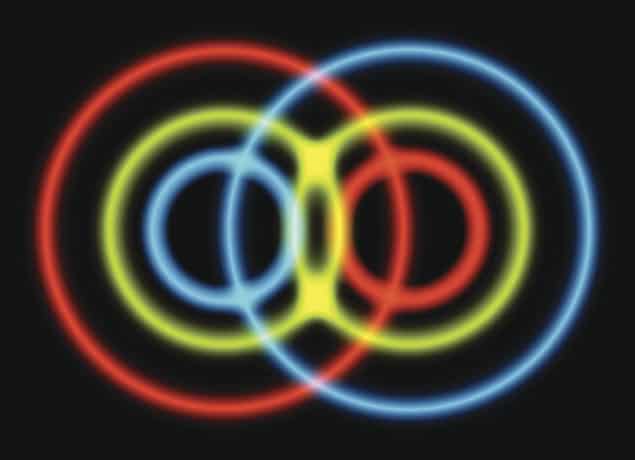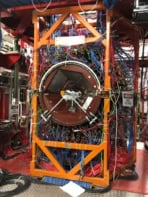
The distribution of quarks inside flavour-asymmetric mesons has been mapped by Yin-Zhen Xu of the University of Huelva and Pablo de Olavide University in Spain. These mesons are strongly interacting particles composed of a quark and an antiquark, one heavy and one light.
Xu employed the Dyson–Schwinger/Bethe–Salpeter equation technique to calculate the heavy–light meson electromagnetic form factors, which can be measured in collider experiments. These form factors provide invaluable information about the properties of the strong interactions as described by quantum chromodynamics.
“The electromagnetic form factors, which describe the response of composite particles to electromagnetic probes, provide an important tool for understanding the structure of bound states in quantum chromodynamics,” explains Xu. “In particular, they can be directly related to the charge distribution inside hadrons.”
From numerous experiments, we know that particles that interact via the strong force (such as protons and neutrons) consist of quarks bound together by gluons. This similar to how nuclei and electrons are bound into atoms through the exchange of photons as described by quantum electrodynamics. However, doing precise calculations in quantum chromodynamics is nearly impossible, and this makes predicting the internal structure of hadrons extremely challenging.
Approximation techniques
To address this challenge, scientists have developed several approximation techniques. One such method is the lattice approach, which replaces the infinite number of points in real space with a finite grid, making calculations more manageable. Another effective method involves solving the Dyson–Schwinger/Bethe–Salpeter equations. They ignore certain subtle effects in the strong interactions of quarks with gluons, as well as the virtual quark–antiquark pairs that are constantly being born and disappearing in the vacuum.
Xu’s new study is described in the Journal for High Energy Physics, utilized the Dyson-Schwinger/Bethe-Salpeter approach to investigate the properties of hadrons made of quarks and antiquarks of different types (or flavors) with significant mass differences. For instance, K-mesons are composed of a strange antiquark with a mass of around 100 MeV and an up or down quark with a mass of only a few megaelectronvolts. The substantial difference in quark masses simplifies their interaction, which allows the author to extract more information about the structure of flavour-asymmetric mesons.
Xu began his study by calculating the masses of mesons and compared these results with experimental data. He found that the Dyson–Schwinger/Bethe–Salpeter method produced results comparable to the best previously used methods, validating his approach.
Deducing quark distributions
Xu’s next step was to deduce the distribution of quarks within the mesons. Quantum effects prevent particles from being localized in space, so he calculated the probability of their presence in certain regions, whose size depends on the properties of the quarks and their interactions with surrounding particles.
Xu discovered that the heavier the quark, the more localized it is within the meson with the difference in the distribution range reaching more than ten times. For instance, in B-mesons, the distribution range for a bottom antiquark is much smaller (0.07 fm) compared to that for the much lighter up or down quarks (0.80 fm). In contrast, the distribution range for two light quarks inside π-mesons is almost equal.
Using these quark distributions, Xu then computed the electromagnetic form factors, which encode the details of charge and current distribution within the mesons. The values he obtained closely matched the available experimental data.
In his work, Xu has shown that the Dyson–Schwinger/Bethe–Salpeter technique is particularly well-suited for studying heavy-light mesons, often surpassing even the most sophisticated and resource-intensive methods used previously.
Room for refinement
Although Xu’s results are promising, he admits that there is room for refinement. On the experimental side, measuring some currently unknown form factors could allow comparisons with his computed values to further verify the method’s consistency.
From a theoretical perspective, more details about strong interactions within mesons could be incorporated into the Dyson–Schwinger/Bethe–Salpeter method to enhance computational accuracy. Additionally, other meson parameters can be computed using this approach, allowing more extensive comparisons with experimental data.
“Based on the theoretical framework applied in this work, other properties of heavy–light mesons, such as various decay rates, can be further investigated,” concludes Xu.
The study also provides a powerful tool for exploring the intricate world of strongly interacting subatomic particles, potentially opening new avenues in particle physics research.
The calculations are described in The Journal of High Energy Physics.



